There seems to be an answer to your question already on the site.
Look at the U/D faces. If you see:
- L/R colour (orange/red) it's bad.
- F/B colour means you need to look round the side of the edge. If the side is U/D (white/yellow) it is bad.
Then look at the F/B faces of the E-slice (middle layer). The same rules apply. If you see:
- L/R colour (orange/red) it's bad.
- F/B colour (green/blue) means you need to look round the side of the edge. If the side is U/D (white/yellow) it is bad.
so it's simply a matter of looping through colors on U/D/F/B faces (or you could do on a single edge basis) and if any of them break the rules you know that edge is bad. This way only looks at each edge once, so I'd say it's fairly efficient. This ignores knowing the scramble algorithm though.
Simply using the scramble algorithm to determine edge orientation would be much harder as you'd have to watch for patterns in the turns and if the scramble is long enough this could end up taking more time than what is explained above. But for completeness I will give a short example of how it could be done.
- Start with the state of all edges oriented and where they lie, (only 12 positions so number accordingly). Or again if you're interested in one only track one.
- Then iteratively go through the list
- any time a F/B is turned an odd number of times flip the orientation on the edges on whichever face was turned.
That could be run backwards keeping track of the state of an edge as you move it back to completeness and if in the end your edge claims to be "misoriented" you'll know it was actually opposite the state that you started with (as the solved cube has all edges oriented).
This however runs in O(n) where n is the length of the scramble, and the first runs in O(1) so if you're expecting very short scrambles this second method may be better. but you're guaranteed speedy results with the first.
I would provide pseudo-code however I don't think these algorithms are very complex and I'm not sure how the data may be stored.
